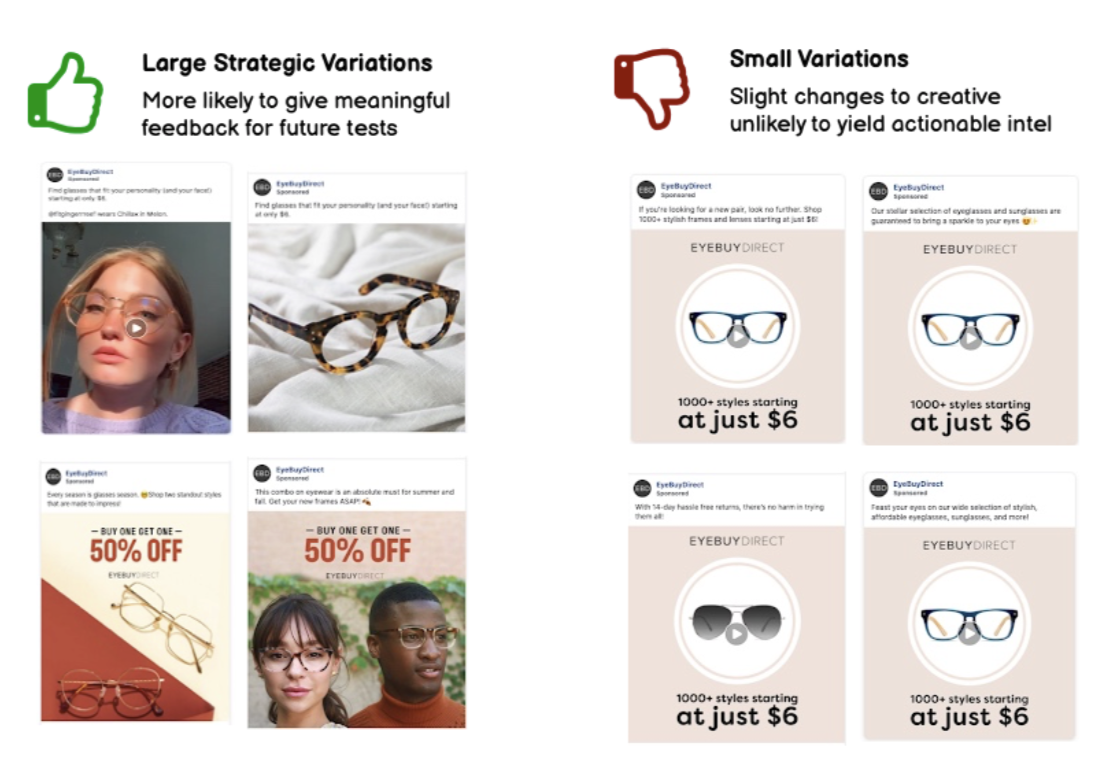What's Wordle?
For those who have been living under a rock, Wordle is the new online puzzle game that’s being played by millions everyday. The game rests on both the player’s process of elimination and ability to think outside the box(es). The key to success in Wordle is learning from your mistakes and improving in your next round.
These same principles are critical to finding better performing creative using Darwin. Here is how:
Starting with strategic variation Learning from both success and failure Iterating towards the final goal
Starting with Strategic Variation

In the first round of Wordle you would never repeat the same letter, and in the same way, you want to test 5 different concepts Similarly, you want to use as many vowels as possible to maximize success. Like capitalizing on past knowledge, your account should influence your first test. Together, your first round of testing should have a breadth of different ideas, but also be informed by past learnings.

Learning from the winners and the losers
When using Darwin for creative testing, you can quickly learn from your creative tests to see what is working, what is showing promise, and what is failing in your creative tests. What is important to understand is that all three of the outcomes help you get closer to your final goal (performance). The only “failure” in creative testing is if you fail to learn from your past tests. Below is the “Wordle” rulebook and how Darwin applies it to creative testing

Here are the three outcomes of creative tests and what you should do with them:
“High Performing” and “High Spending” Creatives (Green Squares)
Right place, right time. Use these to scale your account and inform future tests. Two good things come from green squares: the ability to move into the next round with confidence and a better picture of what’s coming next.
“Average” or “Low Spending” Creatives (Yellow Squares)
Middle of the pack. These are signals that you are on the right track, but you need to make adjustments to the creative (style, wording, format, etc.) on the next round of tests. Yellow squares are helpful too; they help you pivot to maintain momentum.
“Poor Performing” or “Non Spending” creatives (Gray Squares)
Learn from defeat. These are failed ads; they influence what not to do in your next round. While gray squares feel like a loss, they are just as important as the others.
Iterating towards your final goal
If it was as simple as Wordle, you would be able to iterate using the rules above to find creative winners without technology. Creative testing is, unfortunately, harder than Wordle for three reasons:
Without tools to track insights, you are doomed to repeat past failures. In fact, 7 out of every 10 new creatives fail on the social platforms Insights are time sensitive, and your rate of testing is largely dependent on your creative production and “speed to testing” capabilities. It takes the average creative department 2 weeks to produce 5 new ideas to test. All creatives decay over time. High performers won’t maintain performance or spend. The average “winning” creative dies out in less than 3 weeks.
Bottom Line: Darwin makes creative testing simple
Darwin provides you tools to analyze what is working in your creative tests and resources to help you capitalize on the insights quickly. We offer a free two week free trial to show you how to get better performance from your creative tests.
About Darwin AI
Darwin AI is a SaaS company that helps marketers identify and test data driven creative to improve the effectiveness of marketing campaigns. Founded in 2018 by former Mediaocean co- founder, Darwin has offices in New York and Chicago.For more information about our technology or to schedule a demo, please visit us at https://darwinsoftware.wpengine.com/contact/.


